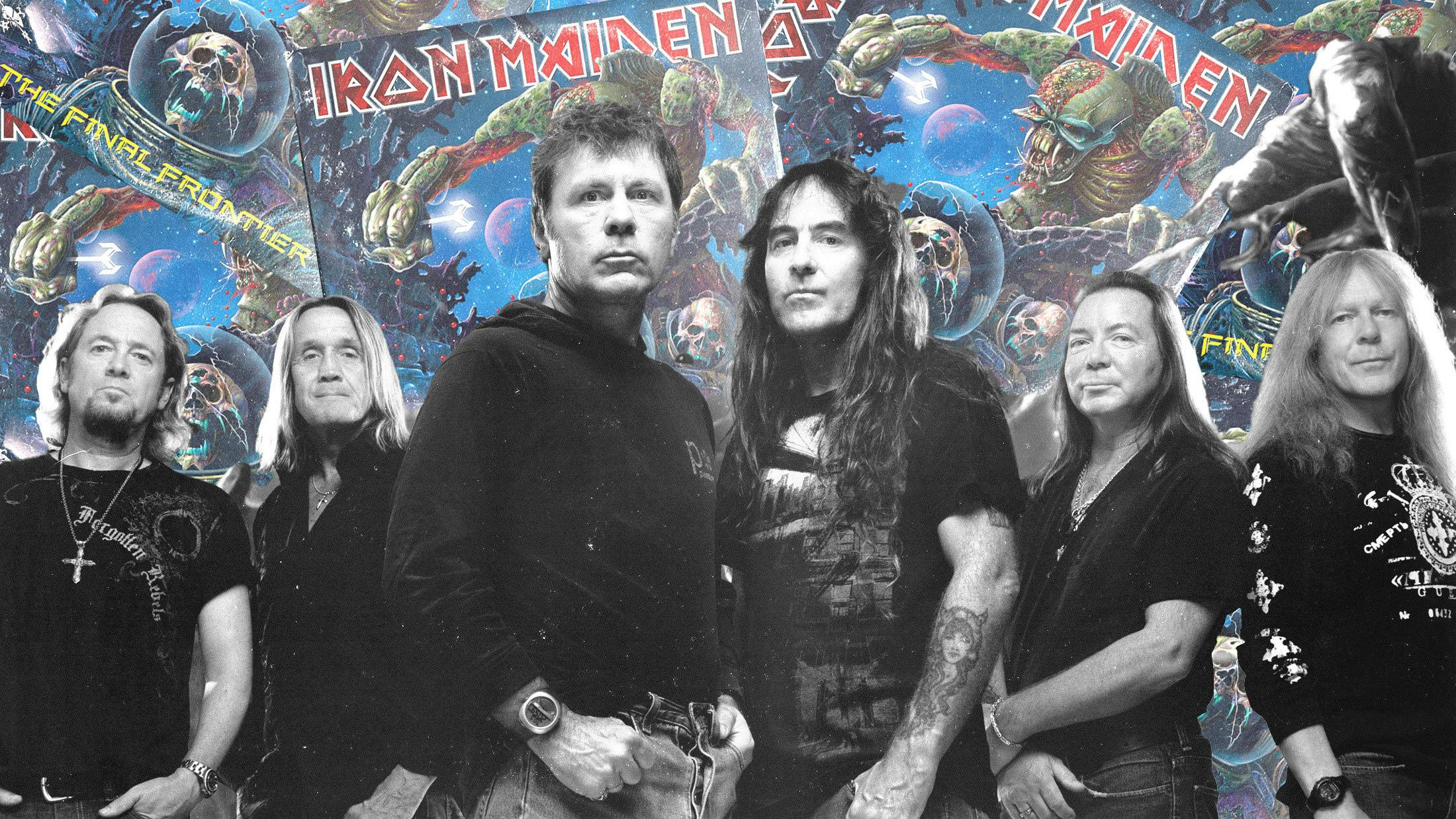Recalling the recording of cinematic closer When The Wild Wind Blows, he even said: “When we finished recording the song I turned to Steve and said, ‘Next to Hallowed Be Thy Name, I think this is the best song you’ve ever written.’ And he went, ‘Nahhh!’ And I said, ‘To me it is.’ That’s how I feel, I think it’s just immense.”
It’s a bold claim, and many might be with Steve on the ‘nahhh’, but the album as a whole is one of the finest in the modern Maiden era. It was recorded at Compass Point Studios in the Bahamas – where they made Piece Of Mind, Powerslave and part of Somewhere In Time – but, unlike the preceding tour, it was certainly not an album that was mired in the past. As Nicko pointed out, it revisited parts of the band’s history, but reworked them with an eye firmly on the future – and we’re not just talking about the sci-fi title or the weird alien Eddie on the cover.
“People will think it’s a Trekkie-type thing, won’t they? We knew when we picked it that it would wind a few people up,” Bruce told us.
READ THIS: 11 songs that bands have written about other artists
And people weren’t wound up just because of a Star Trek reference. Steve Harris once said that he only envisaged Iron Maiden making 15 albums and that there was “going to be an ending point” for the band. With The Final Frontier being that 15th studio album, the title seemed like a deliberate wind-up and sparked worried speculation that this could be it. We know now that wasn’t the case, of course. But at the time even Maiden were unsure and, if the title would inevitably fuel speculation, they were in no rush to stop it.
Unlike A Matter Of Life And Death, Maiden didn’t play the album in its entirety on the accompanying tour, but they did concentrate on songs recorded since the return of Bruce and Adrian Smith in 1999.
The album and tour were both wildly successful. They might not have sold as many copies as they did back in the ’80s but, in a different musical and technological era, nor did anyone else. The Final Frontier was still the band’s most successful in terms of chart placements, hitting the Number One spot in 28 countries. Iron Maiden were firmly re-established as one of the biggest bands in the world. With fears of their impending retirement quashed, there was yet more to come – but to get there they would have to overcome their biggest challenge yet…
Which Iron Maiden album is your favourite? Cast your vote in the ultimate poll now!
